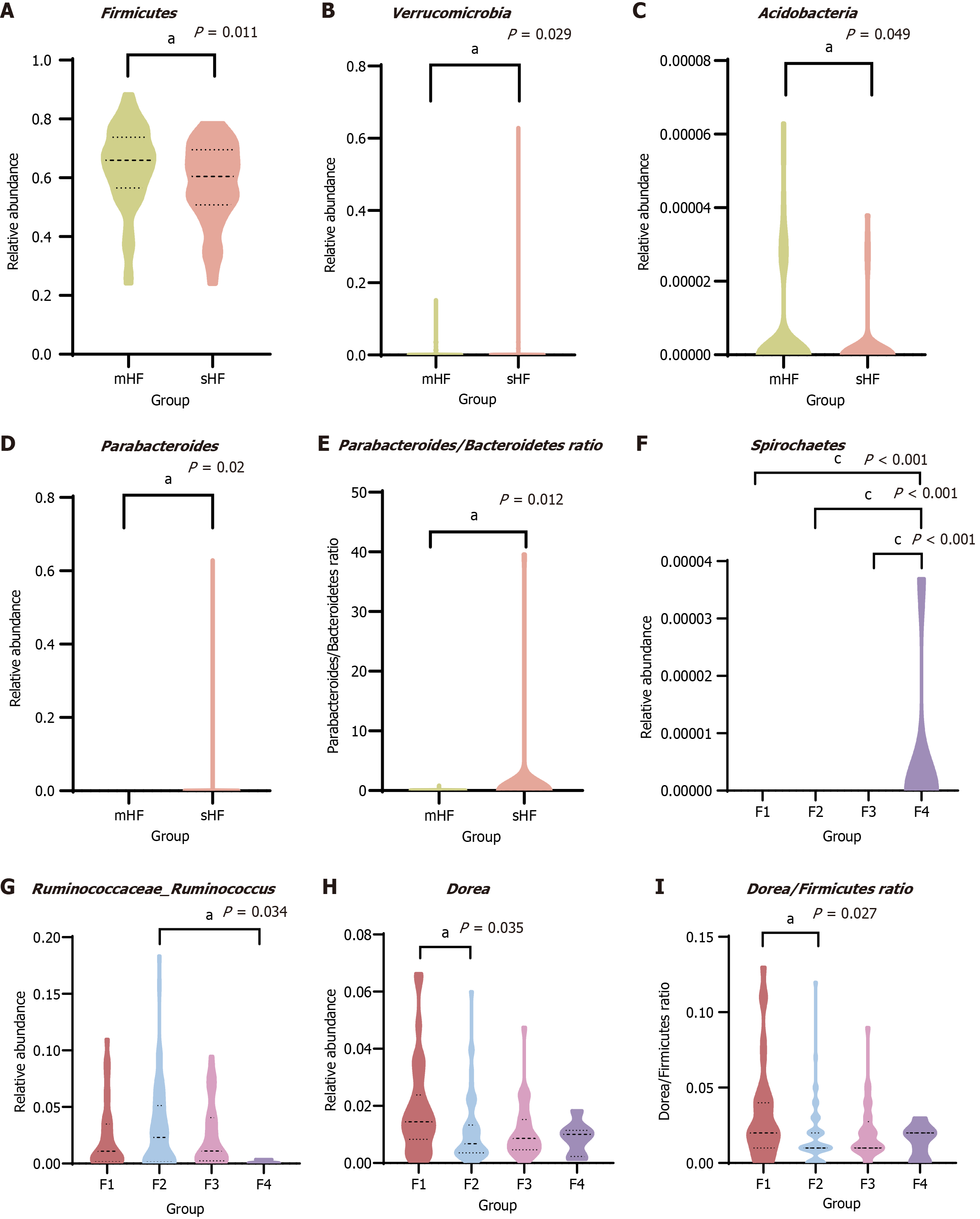Copyright
©The Author(s) 2025.
World J Gastroenterol. Apr 28, 2025; 31(16): 105985
Published online Apr 28, 2025. doi: 10.3748/wjg.v31.i16.105985
Published online Apr 28, 2025. doi: 10.3748/wjg.v31.i16.105985
Figure 3 Identification of differential gut microbiota features in patients in mild hepatic fibrosis and significant hepatic fibrosis groups and different stages of hepatic fibrosis.
A-C: The relative abundance at the phylum level: Firmicutes (A); Verrucomicrobia (B); Acidobacteria (C); D: The relative abundance of Parabacteroides at the genus level; E: The Parabacteroides/Bacteroidetes ratio in mild hepatic fibrosis and significant hepatic fibrosis groups; F-H: The relative abundance at the phylum level: Spirochaetes (F); Ruminococcaceae Ruminococcus (G); Dorea (H); I: The Dorea/Firmicutes ratio in different stages of hepatic fibrosis. All data were analyzed by the Mann-Whitney U test. aP < 0.05. bP < 0.01. cP < 0.001. mHF: Mild hepatic fibrosis; sHF: Significant hepatic fibrosis.
- Citation: Zhu Y, Geng SY, Chen Y, Ru QJ, Zheng Y, Jiang N, Zhu FY, Zhang YS. Machine learning algorithms reveal gut microbiota signatures associated with chronic hepatitis B-related hepatic fibrosis. World J Gastroenterol 2025; 31(16): 105985
- URL: https://www.wjgnet.com/1007-9327/full/v31/i16/105985.htm
- DOI: https://dx.doi.org/10.3748/wjg.v31.i16.105985









